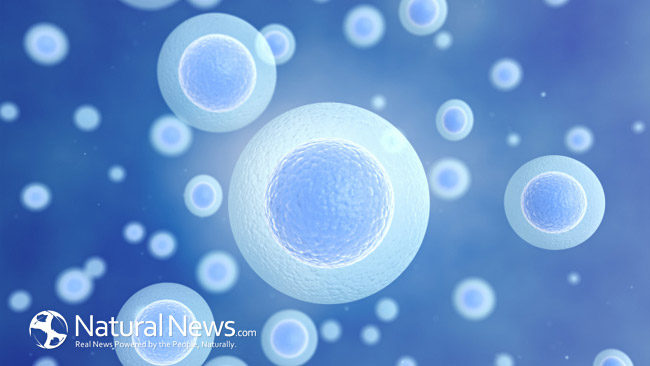Stem cells are vital to the future of anti-aging medicine.
Every day I’m getting a little bit closer to harnessing their immortal power.
What are stem cells?
Stem cells are your reserve of “replacement cells.” Your body can use them to replace any kind of cell that is damaged, old or dying. They can morph into any kind of cell you need, including those for your eyes, kidneys, muscles, skin, heart or blood.
They also allow your body to regenerate damaged tissue in any organ — from your brain to your heart to your liver.
What can affect your stem cells production?
As you age, your stem cells don’t repair and regenerate as well as they once did. Fatigue sets in. That can lead to poor regeneration or even degeneration of certain organs and tissues.
How the mitochondria correlates with stem cell production?
It’s as though your stem cells are running out of energy. You see, just like every other cell in your body, your stem cells contain tiny organelles called mitochondria. They provide the energy your cells need to function.
When mitochondria in stem cells are sluggish, your body’s stem cells can’t regenerate fast enough. The disease process starts to take over. That’s when you start to look, feel and act old.
What vitamin can power the mitochondria and boost stem cells?
There’s a simple vitamin that holds the key to restoring your stem cells and mitochondria to a biologically younger state.
Vitamin B to the rescue
In a study published in the journal Science, researchers revitalized stem cells in elderly mice by targeting a special molecule that helps mitochondria function properly.
They gave old mice a form of vitamin B3. B3 is also known as niacin, niacinamide or nicotinamide. And the mice taking the vitamin had dramatic anti-aging results!
Their muscles significantly regenerated through stem cell activity. The same thing happened with their brain and skin stem cells. And they also lived longer than mice that did not get the vitamin.1
In another study, half the mice were given a form of vitamin B3 for three or four months. The mice taking the vitamin had more energy, less weight gain, and improved insulin sensitivity. On a treadmill test, they could run 33% further than the control mice.2
How does vitamin B3 work?
In your body, B3 breaks down into a molecule called nicotinamide adenine dinucleotide (NAD+). NAD+ is found in every cell in the body. It helps transfer the energy from the foods we eat to the mitochondria where it gets converted to cellular energy.
As NAD+ levels decline, mitochondrial function is impaired. And you start to see many of the physical signs of aging. Studies link decreases in NAD+ levels to:
- Brain degeneration
- Inflammation of blood vessels
- Fatty liver
- Increased belly fat
- Insulin resistance
- Fatigue and loss of muscle strength
The benefits of increasing your NAD+ levels
Increasing your levels of NAD+ can help increase energy in the mitochondria. And that can boost the regeneration abilities of your stem cells.
How to boost your NAD+ levels?
One way to boost NAD+ is severely restricting the number of calories you eat. That has been proven to raise NAD+ levels in cells.3 But no one wants to starve themselves.
The easier way to increase NAD+ is with vitamin B3. Boosting NAD+ with vitamin B3 can help prevent the decline in cellular energy as you age. It also helps preserve the anti-aging action of your stem cells. But B3 does even more.
Vitamin B3 is active in more than 50 metabolic functions in your body. It aids digestion and helps eliminate toxins. It acts as a powerful antioxidant. It assists in producing sex hormones. And it is vital to energizing and maintaining healthy cells of all kinds.
Build Better Mitochondria For Yourself
You can boost your niacin levels with food. The best sources are grass-fed beef and organ meats, pastured eggs, chicken and turkey, and wild-caught salmon and tuna. Good vegetarian sources include peanuts, beets, leafy greens, nuts, peas and beans.
But for the anti-aging benefits to your mitochondria and stem cells, you’ll have to supplement. Look for a supplement containing niacin, niacinamide or nicotinamide. I recommend getting 750 to 1,000 mg a day. Just don’t rush in too fast.
When you start taking B3 supplements you may get a reaction known as “niacin flush.” It feels like a burning and prickly sensation over the face, neck and chest. It’s harmless and usually lasts less than 20 minutes.
The reaction wears off as you continue to use B3, so be patient. It may take a few weeks, but eventually you’ll build up a tolerance.
I recommend starting at a small dose of 250 mg per day. At first, take it every other day and slowly work up. Increase the amount gradually every month until you get up to your target. You can also split your dose into twice a day to help reduce the flush.
Here at the Sears Institute for Anti-Aging Medicine, I usually have patients gradually increase to up to 2 grams per day.
To Your Good Health,
Al Sears, MD, CNS
1. Hongbo Zhang, Dongryeol Ryu, Yibo Wu, et al. “NAD repletion improves mitochondrial and stem cell function and enhances lifespan in mice.” Science, 2016 Vol. 352, Issue 6292, pp. 1436-1443.
2. Canto C, Houtkooper RH, Pirinen E, et al. “The NAD(+) precursor nicotinamide riboside enhances oxidative metabolism and protects against high-fat diet-induced obesity.” Cell Metab. 2012;15(6):838-47.
3. Mouchiroud L, Houtkooper, RH, Moullan N, et al. “The NAD(+)/Sirtuin pathway modulates longevity through activation of mitochondrial UPR and FOXO signaling.” Cell. 2013;154(2):430-41.





